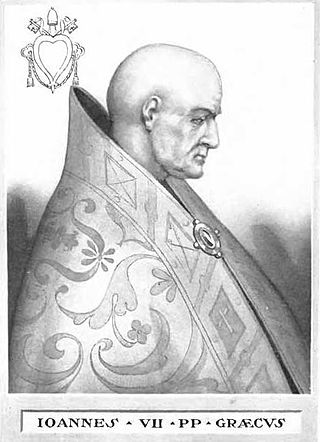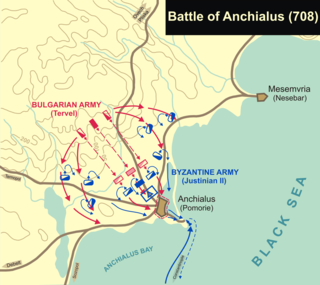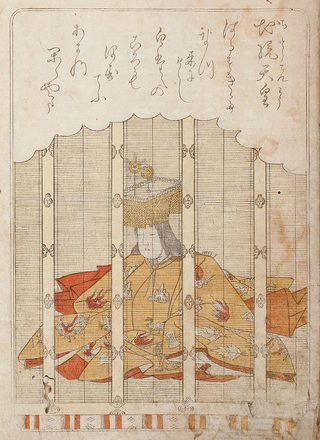The 820s decade ran from January 1, 820, to December 31, 829.
The 720s decade ran from January 1, 720, to December 31, 729.
The 710s decade ran from January 1, 710, to December 31, 719.

Year 710 (DCCX) was a common year starting on Wednesday of the Julian calendar. The denomination 710 for this year has been used since the early medieval period, when the Anno Domini calendar era became the prevalent method in Europe for naming years.
The 680s decade ran from January 1, 680, to December 31, 689.
The 690s decade ran from January 1, 690, to December 31, 699.

Year 707 (DCCVII) was a common year starting on Saturday of the Julian calendar. The denomination 707 for this year has been used since the early medieval period, when the Anno Domini calendar era became the prevalent method in Europe for naming years.

Year 701 (DCCI) was a common year starting on Saturday of the Julian calendar, the 701st year of the Common Era (CE) and Anno Domini (AD) designations, the 701st year of the 1st millennium, the 1st year of the 8th century, and the 2nd year of the 700s decade. The denomination 701 for this year has been used since the early medieval period, when the Anno Domini calendar era became the prevalent method in Europe for naming years.

Year 705 (DCCV) was a common year starting on Thursday of the Julian calendar, the 705th year of the Common Era (CE) and Anno Domini (AD) designations, the 705th year of the 1st millennium, the 5th year of the 8th century, and the 6th year of the 700s decade. The denomination 705 for this year has been used since the early medieval period, when the Anno Domini calendar era became the prevalent method in Europe for naming years.

Year 709 (DCCIX) was a common year starting on Tuesday of the Julian calendar. The denomination 709 for this year has been used since the early medieval period, when the Anno Domini calendar era became the prevalent method in Europe for naming years.

Year 708 (DCCVIII) was a leap year starting on Sunday of the Julian calendar, the 708th year of the Common Era (CE) and Anno Domini (AD) designations, the 708th year of the 1st millennium, the 8th year of the 8th century, and the 9th year of the 700s decade. The denomination 708 for this year has been used since the early medieval period, when the Anno Domini calendar era became the prevalent method in Europe for naming years.

Year 704 (DCCIV) was a leap year starting on Tuesday of the Julian calendar, the 704th year of the Common Era (CE) and Anno Domini (AD) designations, the 704th year of the 1st millennium, the 4th year of the 8th century, and the 5th year of the 700s decade. The denomination 704 for this year has been used since the early medieval period, when the Anno Domini calendar era became the prevalent method in Europe for naming years.

Year 703 (DCCIII) was a common year starting on Monday of the Julian calendar, the 703rd year of the Common Era (CE) and Anno Domini (AD) designations, the 703rd year of the 1st millennium, the 3rd year of the 8th century, and the 4th year of the 700s decade. The denomination 703 for this year has been used since the early medieval period, when the Anno Domini calendar era became the prevalent method in Europe for naming years.

700 (DCC) was a leap year starting on Thursday of the Julian calendar, the 700th year of the Common Era (CE) and Anno Domini (AD) designations, the 700th year of the 1st millennium, the 100th and last year of the 7th century, and the 1st year of the 700s decade. As of the start of 700, the Gregorian calendar was 3 days ahead of the Julian calendar, which was the dominant calendar of the time.

Year 698 (DCXCVIII) was a common year starting on Tuesday of the Julian calendar. The denomination 698 for this year has been used since the early medieval period, when the Anno Domini calendar era became the prevalent method in Europe for naming years.

Leontius, was Byzantine emperor from 695 to 698. Little is known of his early life, other than that he was born in Isauria in Asia Minor. He was given the title of patrikios, and made strategos of the Anatolic Theme under Emperor Constantine IV. He led forces against the Umayyads during the early years of Justinian II's reign, securing victory and forcing the Umayyad caliph, Abd al-Malik ibn Marwan, to sue for peace.

Tiberius III, born Apsimar, was Byzantine emperor from 698 to 705. Little is known about his early life, other than that he was a droungarios, a mid-level commander, who served in the Cibyrrhaeot Theme. In 696, Tiberius was part of an army sent by Byzantine Emperor Leontius to retake the North African city of Carthage, which had been captured by the Arab Umayyads. After seizing the city, this army was pushed back by Umayyad reinforcements and retreated to the island of Crete. As they feared the wrath of Leontius, some officers killed their commander, John the Patrician, and declared Tiberius the emperor. Tiberius swiftly gathered a fleet and sailed for Constantinople, where he then deposed Leontius. Tiberius did not attempt to retake Byzantine Africa from the Umayyads, but campaigned against them along the eastern border with some success. In 705, former emperor Justinian II, who had been deposed by Leontius, led an army of Slavs and Bulgars from the First Bulgarian Empire to Constantinople, and after entering the city secretly, deposed Tiberius. Tiberius fled to Bithynia, but was captured a few months later and beheaded by Justinian between August 705 and February 706. His body was initially thrown into the sea, but was later recovered and buried in a church on the island of Prote.
Abū ʿAbd al-Raḥmān Muḥammad ibn Marwān ibn al-Ḥakam was an Umayyad prince and one of the most important generals of the Umayyad Caliphate in the period 690–710, and the one who completed the Arab conquest of Armenia. He defeated the Byzantines and conquered their Armenian territories, crushed an Armenian rebellion in 704–705 and made the country into an Umayyad province. His son Marwan II was the last Umayyad caliph.
Heraclius was the brother of the Byzantine emperor Tiberius III and the Byzantine Empire's leading general during his reign. He scored a number of victories against the Umayyads, but was unable to halt the Arab conquest of Armenia, nor able to prevent the deposition of his brother by Justinian II, who later captured and executed both Tiberius and Heraclius.

The siege of Tyana was carried out by the Umayyad Caliphate in 707–708 or 708–709 in retaliation for a heavy defeat of an Umayyad army under Maimun the Mardaite by the Byzantine Empire in c. 706. The Arab army invaded Byzantine territory and laid siege to the city in summer 707 or 708. The date is uncertain, as virtually each of the extant Greek, Arabic, and Syriac parallel sources has in this respect a different date. Tyana initially withstood the siege with success, and the Arab army faced great hardship during the ensuing winter and was on the point of abandoning the siege in spring, when a relief army sent by Emperor Justinian II arrived. Quarrels among the Byzantine generals, as well as the inexperience of a large part of their army, contributed to a crushing Umayyad victory. Thereupon the inhabitants of the city were forced to surrender. Despite the agreement of terms, the city was plundered and largely destroyed, and according to Byzantine sources its people were made captive and deported, leaving the city deserted.













